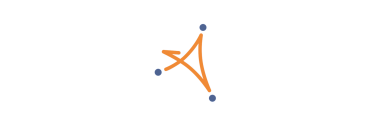Data and Safety Monitoring Board Approves Initiation of Phase 2 of OCU410ST GARDian Clinical Trial for Stargardt Disease
Rhea-AI Summary
Ocugen, Inc. (NASDAQ: OCGN) announced that the Data and Safety Monitoring Board (DSMB) has approved enrollment for the second phase of the Phase 1/2 clinical trial for OCU410ST, a novel modifier gene therapy candidate for Stargardt disease. The DSMB determined the high dose of OCU410ST to be the maximum tolerated dose, with no serious adverse events reported. The trial will proceed to Phase 2 using high and medium doses.
The first phase enrolled nine patients receiving low, medium, or high doses of OCU410ST via subretinal injection. Dr. Charles Wykoff, a lead study investigator, noted that OCU410ST appears to be safe and well-tolerated. Ocugen's Chief Medical Officer, Dr. Huma Qamar, expressed enthusiasm about OCU410ST's potential to be the first one-time novel modifier gene therapy for Stargardt disease, addressing an unmet medical need for an estimated 100,000 patients in the U.S. and Europe.
Positive
- DSMB approved proceeding to Phase 2 of the clinical trial
- No serious adverse events reported in Phase 1
- High dose of OCU410ST determined to be the maximum tolerated dose
- OCU410ST shows promising safety and tolerability profile
Negative
- None.
News Market Reaction 1 Alert
On the day this news was published, OCGN declined 0.90%, reflecting a mild negative market reaction.
Data tracked by StockTitan Argus on the day of publication.
- Determined the high dose of OCU410ST to be the maximum tolerated dose
- No serious adverse events have been reported
- Approved proceeding to Phase 2 using high and medium doses of OCU410ST
MALVERN, Pa., Oct. 22, 2024 (GLOBE NEWSWIRE) -- Ocugen, Inc. (Ocugen or the Company) (NASDAQ: OCGN), a biotechnology company focused on discovering, developing, and commercializing novel gene and cell therapies, biologics, and vaccines, today announced that the Data and Safety Monitoring Board (DSMB) for the OCU410ST GARDian clinical trial recently convened and approved enrollment for the second phase of the Phase 1/2 clinical trial. OCU410ST (AAV5-hRORA) is a novel modifier gene therapy candidate being developed for Stargardt disease.
“The DSMB has recommended moving forward with Phase 2 enrollment, as safety data indicates that OCU410ST appears to be safe and well-tolerated to date,” said Charles Wykoff, MD, PhD, Director of Research, Retina Consultants of Texas & Retina Consultants of America, and a lead study investigator. “The safety and tolerability profile of OCU410ST remains encouraging as the clinical trial has progressed and continues to bring hope to patients with Stargardt disease, which still has no FDA-approved treatments.”
The first phase of the Phase 1/2 clinical trial was an open-label, dose-ranging study that enrolled nine patients to receive either a low (3.75 x 1010 vg/mL), medium (7.5 x 1010 vg/mL), or high (2.25 x 1011 vg/mL) dose of OCU410ST administered via subretinal injection. No serious adverse events (SAEs) have been reported, and the DSMB determined the high dose to be the maximum tolerated dose (MTD).
Stargardt disease is the most common form of inherited macular dystrophy. Symptoms of bilateral central vision loss typically begin in childhood and gradually worsen over time.
“We are enthusiastic about the potential of OCU410ST to be the first one-time novel modifier gene therapy for Stargardt disease,” said Huma Qamar, MD, MPH, Chief Medical Officer of Ocugen. “We are encouraged by the prospect of addressing a substantial unmet medical need for the estimated 100,000 Stargardt patients in the U.S. and Europe.”
The GARDian clinical trial is currently being performed at 6 leading retinal surgery centers across the U.S.
About Stargardt Disease
Stargardt disease is a genetic eye disorder that causes retinal degeneration and vision loss. Stargardt disease is the most common form of inherited macular degeneration. The progressive vision loss associated with Stargardt disease is caused by the degeneration of photoreceptor cells in the central portion of the retina called the macula.
Decreased central vision due to loss of photoreceptors in the macula is the hallmark of Stargardt disease. Some peripheral vision is usually preserved. Stargardt disease typically develops during childhood or adolescence, but the age of onset and rate of progression can vary. The retinal pigment epithelium (RPE), a layer of cells supporting photoreceptors, is also affected in people with Stargardt disease.
About OCU410ST
OCU410ST utilizes an AAV delivery platform for the retinal delivery of the RORA (RAR Related Orphan Receptor A) gene. It represents Ocugen’s modifier gene therapy approach, which is based on Nuclear Hormone Receptor (NHR) RORA that regulates pathway links to Stargardt disease such as lipofuscin formation, oxidative stress, complement formation, inflammation, and cell survival networks.
About Ocugen, Inc.
Ocugen, Inc. is a biotechnology company focused on discovering, developing, and commercializing novel gene and cell therapies, biologics, and vaccines that improve health and offer hope for patients across the globe. We are making an impact on patient’s lives through courageous innovation—forging new scientific paths that harness our unique intellectual and human capital. Our breakthrough modifier gene therapy platform has the potential to treat multiple retinal diseases with a single product, and we are advancing research in infectious diseases to support public health and orthopedic diseases to address unmet medical needs. Discover more at www.ocugen.com and follow us on X and LinkedIn.
Cautionary Note on Forward-Looking Statements
This press release contains forward-looking statements within the meaning of The Private Securities Litigation Reform Act of 1995, including, but not limited to, strategy, business plans and objectives for Ocugen’s clinical programs, plans and timelines for the preclinical and clinical development of Ocugen’s product candidates, including the therapeutic potential, clinical benefits and safety thereof, expectations regarding timing, success and data announcements of current ongoing preclinical and clinical trials, the ability to initiate new clinical programs; statements regarding qualitative assessments of available data, potential benefits, expectations for ongoing clinical trials, anticipated regulatory filings and anticipated development timelines, which are subject to risks and uncertainties. We may, in some cases, use terms such as “predicts,” “believes,” “potential,” “proposed,” “continue,” “estimates,” “anticipates,” “expects,” “plans,” “intends,” “may,” “could,” “might,” “will,” “should,” or other words that convey uncertainty of future events or outcomes to identify these forward-looking statements. Such statements are subject to numerous important factors, risks, and uncertainties that may cause actual events or results to differ materially from our current expectations, including, but not limited to, the risks that preliminary, interim and top-line clinical trial results may not be indicative of, and may differ from, final clinical data; that unfavorable new clinical trial data may emerge in ongoing clinical trials or through further analyses of existing clinical trial data; that earlier non-clinical and clinical data and testing of may not be predictive of the results or success of later clinical trials; and that that clinical trial data are subject to differing interpretations and assessments, including by regulatory authorities. These and other risks and uncertainties are more fully described in our annual and periodic filings with the Securities and Exchange Commission (SEC), including the risk factors described in the section entitled “Risk Factors” in the quarterly and annual reports that we file with the SEC. Any forward-looking statements that we make in this press release speak only as of the date of this press release. Except as required by law, we assume no obligation to update forward-looking statements contained in this press release whether as a result of new information, future events, or otherwise, after the date of this press release.
Contact:
Tiffany Hamilton
Head of Communications
Tiffany.Hamilton@ocugen.com








